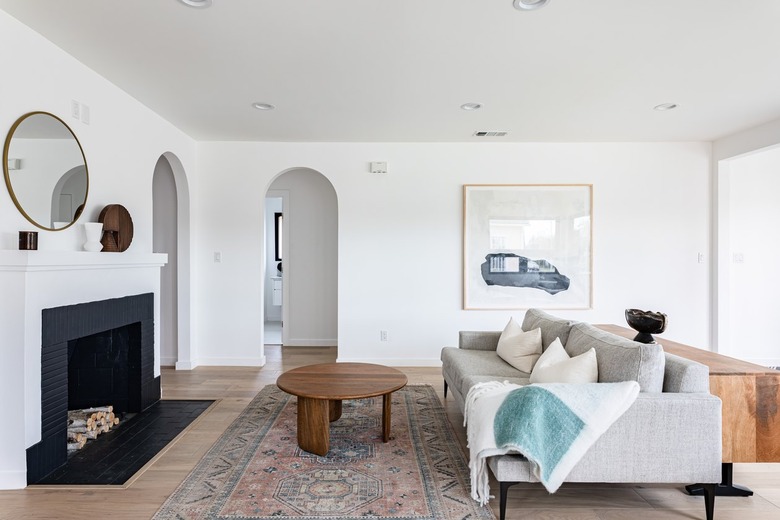How To Block Off A Fireplace
We may receive a commission on purchases made from links.
A fireplace can enhance the atmosphere in any home, but it's an energy waster when you aren't using it. It's hard to prevent cold outdoor air from blowing through the chimney into the house, even if you keep the damper closed. At some point, higher energy costs may persuade you to be done with the fireplace once and for all and block it.
It seems like a simple enough procedure: Block off the chimney, close the damper, and cover the fireplace opening with brick, drywall, or some other material. There's a small problem, though, that could turn into a big one in a few years, and that's moisture. If you leave the chimney without any ventilation, condensation will collect and eventually leach through the brick and promote mold growth.
Capping the Chimney Is a Good Idea
Capping the Chimney Is a Good Idea
If you're going to close off your fireplace, it's a good idea to cap off the chimney to keep out small animals, birds, and of course rain, snow, and wind. However, don't do this by sealing it with brick or closely fitting sheet metal. The chimney still has to be able to breathe to keep the inside free of condensation.
After cleaning the chimney one last time to remove creosote buildup, find a cap that fits the flue and secure it with screws and roof sealant. The top of the cap should be solid metal and be separated from the base by a metal grate with a close-enough mesh to keep out animals. The mesh provides the airflow needed to keep the chimney ventilated.
Simpler Is Probably Better
Simpler Is Probably Better
When it comes to blocking the fireplace, you don't need to be elaborate. If the fireplace has a metal frame, an easy way to block it is to use an insulated magnetic fireplace draft cover. This is sized to fit the fireplace opening, and it has magnetic edges that seal it to the frame. It provides a bit of decoration for the room in which the fireplace is situated, and if you ever change your mind and decide to use the fireplace, it's easy to remove.
You can also block the fireplace opening with plywood or even drywall depending on the walls surrounding the fireplace. If you choose a permanent covering like this, provide at least one vent (a standard floor register would work) to allow for air circulation. No matter how you cover the fireplace, it's important to leave the chimney damper open so air can circulate freely in the chimney.
Covering the Fireplace With Brick
Covering the Fireplace With Brick
If you're determined to put the fireplace permanently out of commission, you might consider covering the opening with brick. You can make a wall that covers the opening out of fire brick or standard face brick, but to solve the ventilation problem, you should include at least one air brick. This special brick has holes that allow air to pass through. Set this into the second or third course of bricks close to the floor and don't forget to leave the damper open.
After completing the brick barrier, you may decide to cover it with plaster to help tie it into the surrounding walls. If you do this, be sure to leave the air brick exposed.
